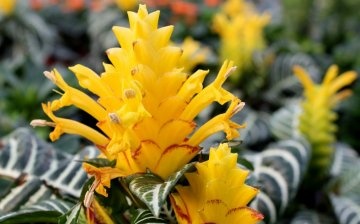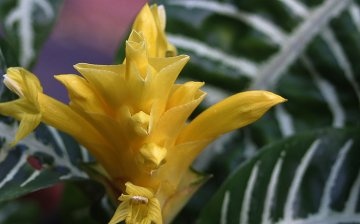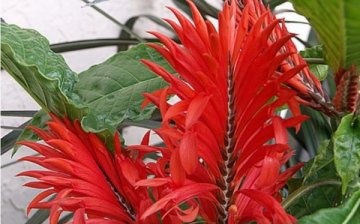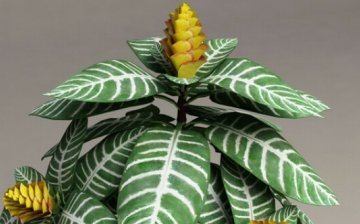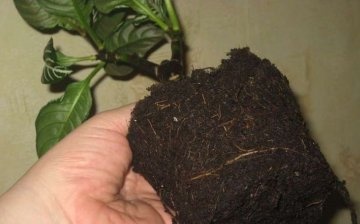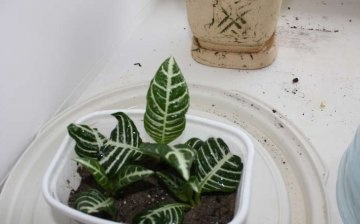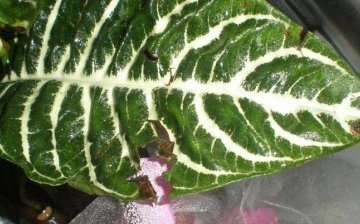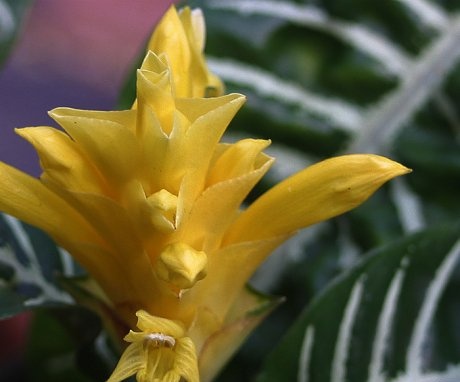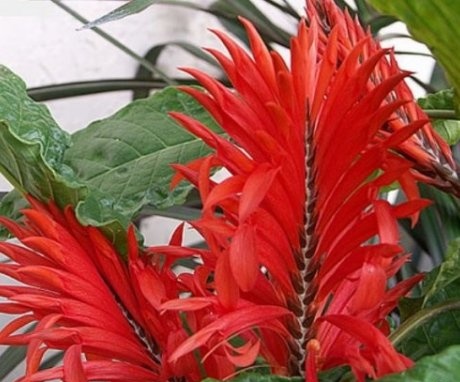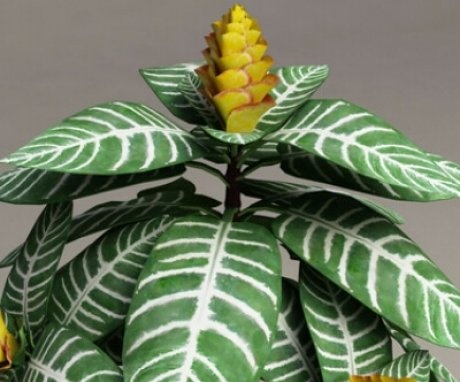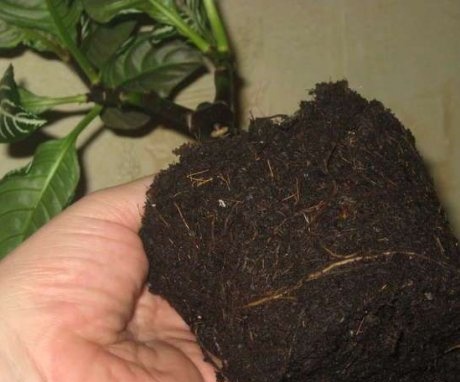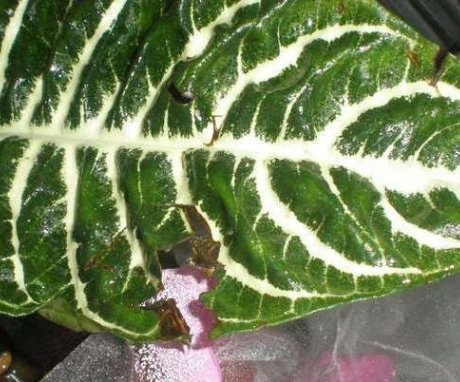Afelandra - an exotic plant on your windowsill
Among the many decorative deciduous plants, Afelandra can be distinguished, since it also belongs to the beautifully flowering plants. With large green leaves with a fancy white pattern, the plant has a fairly colorful and unusual flower. You can grow such a bush at home if you follow all the rules and organize all the conditions.
Content:
- Afelandra: general information
- Varieties
- Care
- Transplant and pruning
- Reproduction
- Diseases and pests
Afelandra: general information
Afelandra is an exotic perennial plant that belongs to the acanthus family. Its homeland is the rainforests of South America. Aphelyandra are a perennial evergreen shrub of short stature. The stems are large, branching, and grow stiff over time. The leaves are large, opposite on the branches. Large, glossy, usually dark green, sometimes with white veins.
It blooms with spike-shaped inflorescences, the color of which depends on the type and variety of the plant.
They are formed at the tops of the stems. Bracts are large, usually green or yellow in color, but other tones are also found. Blooming of buds occurs in the autumn period and lasts for several weeks. In place of the flowers, fruits are formed. This is a box that consists of two parts, each containing a pair seed.
Varieties
Cultivars for cultivation:
- Afelandra orange. Perennial herbaceous bush... The stems are thick, juicy, colored in a reddish tone. Mature stems grow stiff over time, thus creating a bush. The leaves are large, opposite on the stems. They have an ovoid shape, a pointed end, painted in a green tone with a silvery bloom. The length of one leaf can reach 25 cm. At the tops of the stems, spike-shaped, protruding inflorescences are formed, the height of which does not exceed 15 cm. They are painted in an orange-yellow tone, the bract is green.
- Afelandra is protruding. Perennial, evergreen undersized shrub. It has reddish, thick stems that become stiff over time. The leaves are large, ovate, pointed at the end, smooth. They are painted green. A distinctive feature of them are white stripes, which are located along the veins and create a beautiful spectacular pattern. The inflorescence is medium-sized, spike-shaped, loose, yellow in color, like the bracts.
Care
To choose the correct location for the aphelandra in the room, it is necessary to take into account that the plant is thermophilic. All year round, the ambient temperature should be 15-24 degrees above zero.
In apartments, conservatories and greenhouses, the flower is placed in a well-lit place, this is especially important in winter. It is also recommended to add artificial lighting for a couple of dark months. In the summer, when the sun is especially intense, it is necessary to slightly shade the leaves from the rays to avoid burns.
In natural conditions, aphelandra grows in humid places.
Therefore, if the air is dry in the room, the tips of the leaves begin to dry out and curl. There is also a possibility diseases or attack pestas the health of the plant is weakened.It is recommended to install a humidifier or place a flower pot on a pallet with damp expanded clay and sand. It is necessary to periodically add water to the sump. This process is necessary during the winter heating season.
TO watering you need to be careful:
- The earthen lump should not dry out in the pot, a prolonged lack of water can lead to the death of the entire bush.
- The soil should be constantly slightly damp.
- For glaze it is necessary to take only soft and settled water.
- Increased hydration of the plant occurs during the period of growth and flowering.
For the correct and healthy development of the bush, it is necessary to make annually mineral and organic fertilizers. In this case, it is recommended to monitor the flower, an overabundance of nutrients can negatively affect the plant. Submitted fertilizers together with watering 1-2 times a week in the spring, when the plant is developing.
Transplant and pruning
Young plant transplanted every year, while picking up a pot one size larger than the previous one. For an adult plant, this process is carried out once every 2-3 years. A good sunny day is chosen in the spring. The soil is watered to soften it, and carefully removed root system together with an earthen lump.
In a new pot, a drainage layer is laid on the bottom and over the palatine fresh fertile substrate.
The old soil can be removed from the roots a little without touching the main rods. In a new pot, the plant is placed together with an earthen clod and sprinkled with fresh soil, which is trampled down. After that, you need to water the bush and let it brew a little so that the earth subsides a little, and add a little more soil.
Afelandra needs regular, but not annual pruning... With constant growth, after a few years, the branches will begin to lengthen, forming a loose bush. The leaves will become smaller, as will the inflorescences.
Once every 2-3 years old branches are cut in half.
This stimulates the growth of side shoots, which will make the bush thicker and more decorative. Held pruning at the end of winter, when the period of active growth has not yet begun.
Reproduction
Reproduction of afelandra can be done in three ways: using cuttings, seeds and leaves.
Features of Afelandra cuttings:
- Cuttings are harvested in autumn and winter from adult plants, when they have already faded. Moreover, the bushes intended for cuttingsI need to be kept for 1-2 months at a temperature of 16-17 degrees Celsius.
- After that, cuttings can be cut from it, the length of the cut branch should be no more than 12 cm and have 2-3 eyes. After that, the mother bushes transplanted.
- Rooting of cuttings is carried out in fertile loose soil, which is placed in small boxes.
- The cut branches are buried in such a way that 1-2 eyes remain on the surface.
- Containers with seedlings are transferred to a light, humid room, the ambient temperature in which is in the range of 22-25 degrees Celsius.
Rooting will be seen by the new leaves that appear on the seedlings. After that, after a month, the plants can be transplanted into separate small pots.
To do this, the entire soil is well watered, and each individual bush is transferred into a new container along with a lump of earth. This is done so that young roots are not damaged during the process. Cuttings can be carried out almost all year round. For young plants, it is necessary to organize intensive lighting and comfortable conditions for development.
Reproduction using leaf cuttings takes place in about the same way as cuttings.
In this case, an adult large leaf is selected, the petiole of which has not yet had time to stiffen, and the leaf plate has become rigid. It is cut along with the axillary bud and takes root at a temperature of 23-24 degrees in a loose moist substrate.After the first new shoots and leaves appear, you need to wait 1-2 months and transfer the new bush to a separate small pot.
Reproduction using seeds can be carried out with freshly harvested material from the mother bush:
- In this case, sowing is carried out in late winter or early spring.
- Seeds are placed shallowly in fertile loose soil.
- The container is transferred to a room with a temperature of 18-20 degrees Celsius.
- Caring for them is normal, timely watering and normal temperature conditions.
After 2 weeks, the first hints of sprouts should appear. Dive bushes should be carried out only when 2 adult leaves appear on them. Young plants are placed in a box with prepared fresh soil for further development. When the aphelandras have strengthened their root system and begin to grow intensively, they can be transferred to separate pots. After a year, new bushes can give their first flowers.
Diseases and pests
Basically, all varieties and species of Afelandra are resistant to diseases and pests... But with improper care and weakening of the health of the bush, problems may appear. If the air around the plant has been dry for a long time, then there is a high probability of an attack by a spider mite. To combat it, it is recommended to use special drugs, and also increase the humidity in the room where the plant stands.
A weakened plant can be attacked by a mealybug.
If found, it is recommended to transplant the plant into a new pot, completely replacing the soil and drains, and treating with special agents.
Afelandra can decorate any apartment, office, greenhouse or winter garden. Simple care rules, timely feeding and pruning bush will allow you to enjoy the plant for a long time. Afelandra easily breeds in almost all available ways.
More information can be found in the video.



